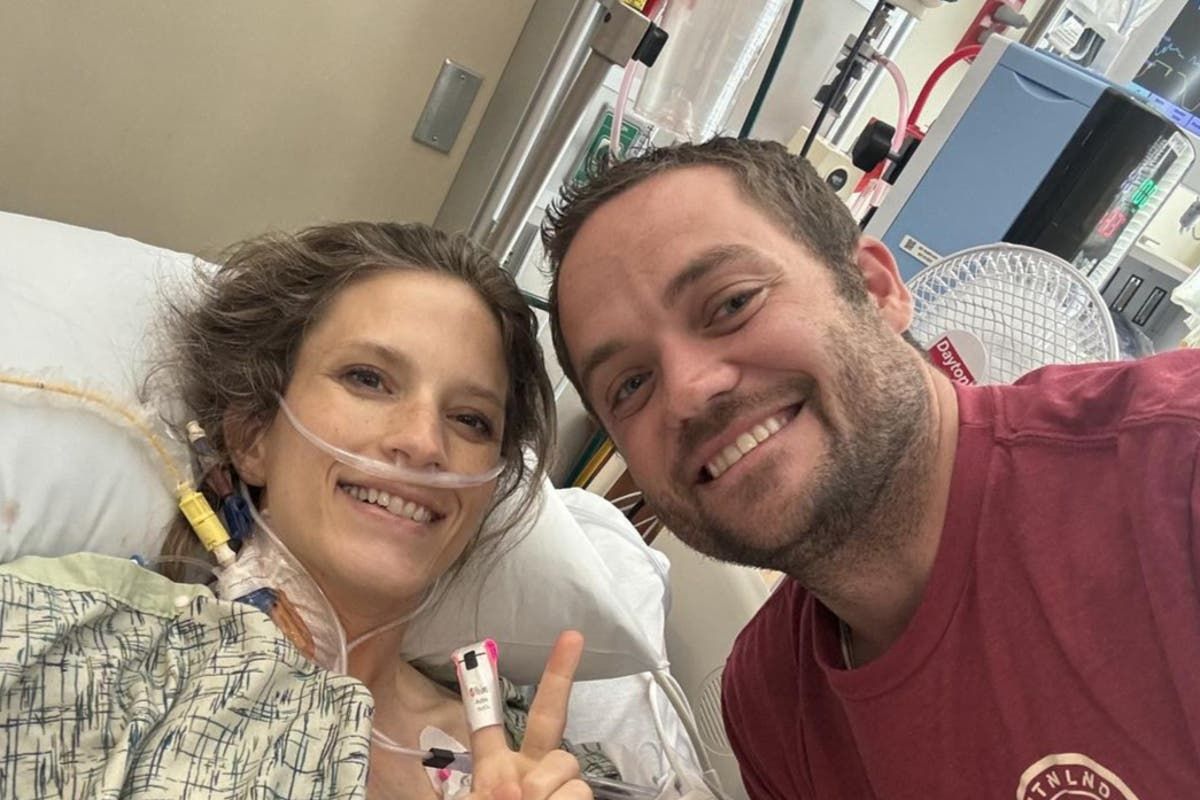Your support helps us tell the story.
My recent work focusing on Latino voters in Arizona has shown me how crucial independent journalism is to giving voice to underrepresented communities.
Your support is what allows us to tell these stories and draw attention to issues that are often overlooked. Without your contribution, these voices may not be heard.
Every dollar you donate helps us continue to shed light on these critical issues in the run-up to the election and beyond.
Eric Garcia
Washington Office Chief
A Utah mother has issued a warning to other seemingly healthy women after suffering a heart attack on a treadmill.
In May, Justine Carter's casual treadmill workout resulted in a shocking near-death experience, as the 33-year-old suffered a heart attack 12 minutes in. At first, she began to have difficulty breathing, then a pain in her back spread to her chest, and moments later she began to vomit violently.
At the time, Carter assumed he had contracted some form of flu, but things got worse.
“That’s where things get a little confusing,” the mother said. Fox NewsShe added that she had called her husband and mother-in-law, but that she did not remember having those conversations. “The next thing I knew, I woke up in the hospital.”
Her husband Kevin and mother-in-law Teresa discovered that Justine had collapsed in the bathroom, apparently having a seizure. A nurse at HCA Healthcare's Mountain View Hospital in Payson, Utah, kept her alive using CPR. Justine's heart did not beat for 25 minutes and blood was only circulated through her body by CPR.
“It was all pretty ominous,” Teresa recalled to the outlet. “He had what we call a ‘tombstone rhythm’ on the monitor, which tells us he was having a heart attack and his heart muscle wasn’t getting enough oxygen.”
Once emergency medical services took her to HCA Healthcare's Mountain View Hospital, doctors confirmed that Carter had experienced a spontaneous coronary artery dissection (SCAD).
Spontaneous coronary artery dissection occurs when there is a tear in the wall of a coronary artery. It can lead to a heart attack, heart rhythm problems, or sudden death. According to the American Heart Association (AHA), those who suffer from this condition are typically women between the ages of 40 and 50 who typically present as healthy individuals. “Scientists believe that multiple factors may likely cause spontaneous artery dissection, such as abnormalities in the arteries, genetics, hormonal influences, or inflammatory problems,” their website says.
Before the episode, Justine said she had not experienced any warning symptoms. She recalled: “That day I felt low on energy and not feeling well, but I thought it was because it was winter and cloudy.”
A week after the first heart attack, Justine experienced another cardiac event presenting the same symptoms as the last time.
This time, she was flown to HCA Healthcare's Timpanogos Regional Hospital, where a full cath lab team and cardiothoracic surgeon were available in case she needed open-heart surgery.
The aortic tear that had caused her first episode had grown in size, causing the walls to swell and block blood flow. The heart team restored blood flow by using a balloon to compress the artery wound. They then implanted a small heart pump to temporarily relieve pressure on Justine’s heart while it healed.
Justine has since completed cardiovascular rehabilitation and is now able to do some physical activities, such as walking her dog, but has not been cleared for more strenuous activities, such as hiking. She said the whole ordeal has allowed her to put things in perspective.
“You can live your life afraid of many things, but if you spend every day in fear, you won’t enjoy life,” she said. “Life is fragile and short, so enjoy it as it is.”
She also shared a warning for other seemingly healthy women: “If you feel like something is not right, don’t hesitate,” she warned. “Just call 911, because a lot of things can be prevented if you do.”












